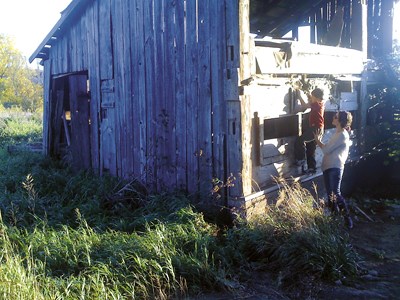I’m going to let you in on a secret of mine — some of the best vintage pieces in my house are found. That’s right. Once lost, they were retrieved from their final resting place by a well-trained eye and a deep trunk.
It’s really astonishing, when you think about it — a whole room, furnished as if by magic. Yet there it is. Over time, the warmth in my home, emitted from becoming antiques and interesting treasures, has grown tenfold.
It’s a movement, it is. There’s a whole group of folks in my neighbourhood, in my city, across the province, in the country, in the world, that identify as “urban harvesters.” We like to salvage what others deem unworthy — too fraught with memory, broken, ugly, unfixable — and restore said pieces, giving them new life.
There are other names for the movement — freeganism, reclaimism — call it what you will. We share the intention of nurturing a post-consumer mentality in a highly materialistic culture of need.
At this ostensible need, we balk. We turn our humble noses at the thought. Need a new bookshelf? Wait. One will appear. It just takes time. And as if by magic, one does, and it’s given a fresh coat of paint.
It’s a joke in the neighbourhood between friends and I — if something is spotted that is worthy, if it’s not grabbed on the spot, then likely one of us will claim it. And most often, it’s me. But we aren’t hoarders.
If someone I know needs a piece (and we do let each other know), then we’ll grab said piece for a friend. Or if we spot something on a drive-by, we can post it to Facebook via text: “Great antique dresser on the corner of this and that.” It’s really a community effort.
One of my most prized finds didn’t come from the ‘hood. During a visit to John, my partner’s dad down south, where farmland is at risk of gentrification and urban sprawl, we took the opportunity to have one last poke through a century-old barn that was scheduled to be taken down in the coming months.
Walking through blackberry thistles taller than my son, we imagined the life of this family, and how they must have waited all summer to pick the sun-warmed berries that grew so abundantly around the rail fencing. Peering in, there were signs of life: an aluminum oil can, a broken ladder, a rusted can of nails.
But lo, on yonder hayshelf, there appeared a more domestic signal. Something so colourful and surprising that I immediately began climbing the beams. Reaching out for the corner, I pulled mightily and down came decades of feces, hay, dust, and a frightful-looking hand-hooked rug.
A prize.
After a delicate wash, a cutting away of rotted cotton, my remnant of history has found a home on the seat of an old, simple wooden chair. Now that’s another interesting story …
Anne Boulton is an avid gardener who lives in Sudbury. Contact her at [email protected] or visit her blog at boultonanne.typepad.com/greenboots.
Posted by Vivian Scinto
Join Sudbury.com+
- Messages
- Post a Listing
- Your Listings
- Your Profile
- Your Subscriptions
- Your Likes
- Your Business
- Support Local News
- Payment History
Sudbury.com+ members
Already a +member?
Not a +member?
Sign up for a Sudbury.com+ account for instant access to upcoming contests, local offers, auctions and so much more.
